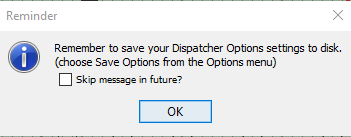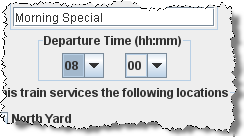

The program also supplies a simple panel to show how the train icons work. To get rid of the demo files, use the Restore function in the Tools menu of the Operations Settings to reload the first backup date, which is the blank entry form. Restart JMRI to complete the demo load process. The program will create a backup of your current configuration if you have one, and then load the demo files.

Selecting Load Demo Files closes DecoderPro® and it must be restarted to open the Demo Railroad.

Load the demo files from the Tools menu in the Operations Settings window, select Load Demo Files, the demo files will load after you restart DecoderPro. The operations program provides a set of demo files to help introduce you to the some of the features and capabilities of this program. The operations program is included in the JMRI/DecoderPro® suite of tools and can be found under the main menu heading Tools->Operations. The icon can be taught to move in the panel along with the train from location to location. The program can also place icons representing trains on a JMRI panel. A switch list for a location shows the work for all the trains that visit tha location. The program generates car manifests for each train and switch lists for any location. Optionally, trains can be configured to require a caboose or car with Flashing Rear End Device (FRED). Trains can be configured to require a caboose. Spurs are used to service industries, and can optionally have custom schedules assigned to them. Locations can have spurs, yards, staging and interchange tracks. Features include the ability to control what car types, road names, and car loads a location can service, the available track space for a location, and the maximum length the train can be between any two locations on the train's route. Trains are assigned routes that define locations where cars can be picked up or set out. The Car roster includes information about the car, including road name, number, type of car, color, length, weight, date built, and owner. The program allows you to build a roster of cars, define locations on the railroad, and route for trains to travel. The Manifest provides a list of car pick up and set out and shows where the car's are located and where they should be eventally positioned on the railroad. A manifest or switch list details the work that a train will perform during an operations session. Using JMRI to operate trains allows you to build computer generated car manifests for your railroad. What are the Programming Modes? DecoderPro® Programming Modes.How do I set up my preferences? Using DecoderPro®.What DCC systems will DecoderPro® work with?.


 0 kommentar(er)
0 kommentar(er)
